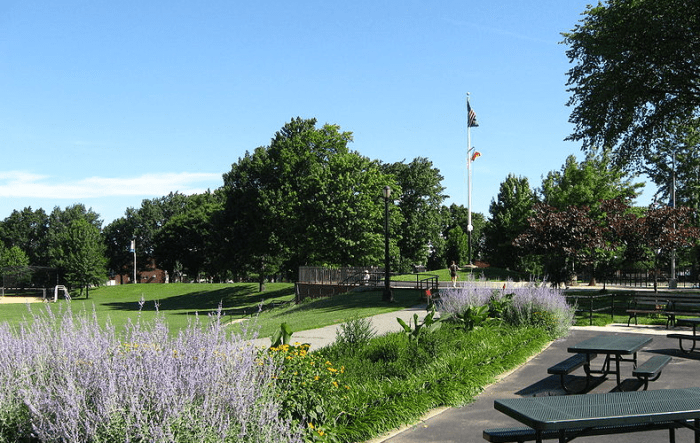Art is comprised mainly of two elements: time and raw materials. While the art itself is physically constructed with materials – paint, clay, trash, whatever – it is time that decides whether or not the art lives on. Prehistoric people decided to paint on cave walls, and time decided to preserve that work for modern eyes.
Contrary to the process in which art becomes art, an artist becomes an artist through a mix of sheer will and talent. If the artist relies on time, they’ll be left with a blank canvas and a pile of unpaid bills.
Artist Violet Baxter grew up as a shy, yet promising youngster in the Bronx. Her grade school teachers noticed her talents and saw fit to recommend she take art classes on Saturdays. A fourth grade teacher, Evelyn Licht, befriended the young Baxter and helped her score her first “art job” – designing cake boxes on weekends when she was 13 years old.
“We stayed close until her death,” said Baxter, whose studio resides in the Wills Building on 21st Street. “She was responsible for my first job and my first gallery exhibitions.”
An educated and trained artist, Baxter graduated from high school and went on to Hunter College for two years of night classes. She graduated with honors from the Cooper Union Art School after five years of night classes and continued her schooling at Columbia University studying under renowned American artist Ralph Mayer.
In 1983, she took a studio in Union Square, where she stayed until skyrocketing rents drove her to L.I.C.
“Here my windows face a new school called Mason Tenders Training, highways that lead to the Queensboro Bridge, the El train, Silvercup Studios with its sign and a wide sky,” she said. “This is my subject matter. I have made closely observed drawings of this view, that sets it somewhat in memory. From the drawings I made watercolors and oils.”
Baxter said that she doesn’t know what the finished work will look like when she begins a piece. Again, time decides the finished project.
“It can take a long time to resolve a painting, sometimes years,” she said. “It is put aside until I can see if there is something else for it. There are always paintings around my studio in this state.”
The state of Baxter’s ideal painting studio lends to the reflective quality of her work. She seeks a quiet place with a view to achieve the quiet, contemplative narrative revealed in her paintings.
“I keep in touch with myself in my work. Like music, the themes are within the work,” she said. “I need a block of time to get into the work. It starts with problems to solve and at some point time dissolves. I often work at night – night light and self reflections, outside and inside, are what interests me.”
Among LIC artists, Baxter is most interested in Elinore Schnurr, Juvenal Reiss, Karen Fitzgerald and her new friend, Orestes Gonzalez. She feels one of the most important galleries in L.I.C. is the Jeffrey Leder Gallery. Her paintings were shown there through last season, and much of her work will be on exhibit in the upper gallery beginning Sunday, February 19, with a reception from 4 to 7 p.m. continuing through Sunday, March 11.
Baxter will continue to share her view and present images in the hopes her work will resonate with viewers. Her hard work – and the hard work of her influences – continues to payoff tenfold. Now she works with time to see her vision through.
“I have hundreds of influences, mostly artists from prehistoric time to the present, from nonobjective to representation,” she said. “My interests are with painting, as a personal touch of the hand. A drawing on a mammoth tusk seen at the Museum of Natural History still resonates, and reaches out through millennia.”


































